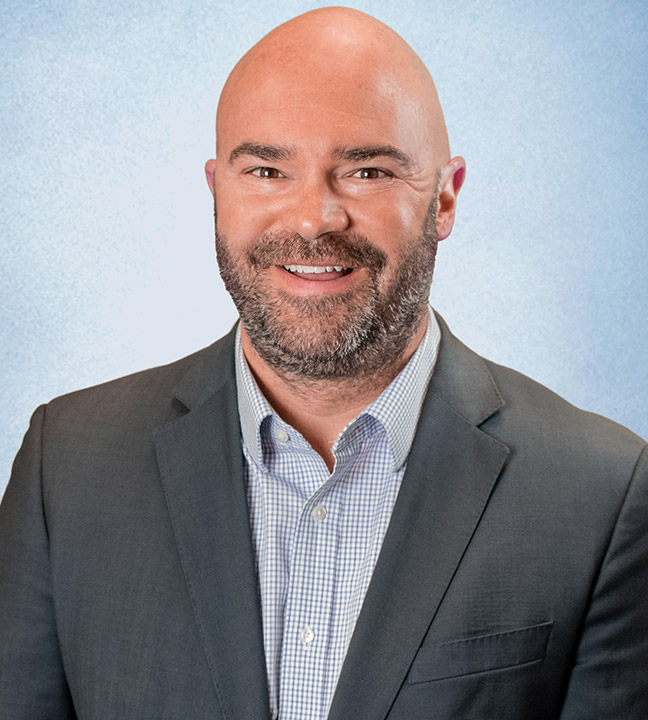Over the past week, President Donald Trump has publicly sent letters to countries around the globe informing them of the tariffs they can expect to see implemented August 1, with various rationales given for each country.
Over the past few days, Canada, Mexico and the European Union officially received notice that Trump was unhappy with the progress of negotiations with the countries during the pause that he placed on tariffs originally declared back in March.
The pause has been extended to the beginning of August, but all three parties have been informed that their tariff rates will increase.
If Trump delivers on his threats, he’s increasing the amount of trade on which U.S. importers will have to pay new elevated taxes to more than half the value of goods coming into the U.S., Bloomberg reported.
- Products from the EU and Mexico combined were worth more than $1.1 trillion in 2024, or more than a third of all imports.
Chris Anderson, member of the PPAI Board of Directors and CEO of HPG, PPAI 100’s No. 4 supplier, which has a production presence in Mexico, says that the uncertainty surrounding tariffs has forced a long-term approach without reacting too dramatically to new developments.

Chris Anderson
CEO, HPG
“While the most recent news out of the White House is unsettling, you could use that same word for any number of updates coming out of Washington so far in 2025,” Anderson says. “That said, HPG’s position throughout all the tariff uncertainty has been, and continues to be, one of focus on our long-term initiatives, being mindful to not become prisoners of the moment and avoiding meaningful decisions based on, what is likely to be, a temporary (likely mid-negotiation) position.”
Canada Tariffs Going To 35%
Trump has announced that tariffs on Canadian imports will increase to 35% if a new agreement is not reached by Aug. 1.
- His stated reasoning is twofold: his claim that Canada is allowing fentanyl to enter the U.S. as well as his displeasure with the 25% retaliatory tariffs that Ottawa imposed on U.S. imports in March.

Both sides had stated a goal of reaching a trade agreement by July 21, but Trump appeared to halt negotiations with Canada on June 27 due to the country’s digital service tax, ending any doubt that the two sides were still engaged in a trade war.
Canada’s Prime Minister, Mark Carney, addressed the announcement on social media, claiming, “Canada has made vital progress to stop the scourge of fentanyl in North America.”
Throughout the current trade negotiations with the United States, the Canadian government has steadfastly defended our workers and businesses. We will continue to do so as we work towards the revised deadline of August 1.
— Mark Carney (@MarkJCarney) July 11, 2025
Canada has made vital progress to stop the scourge…
The 35% tariffs on Canadian imports are separate from additional levies the administration has applied, including 50% tariffs on steel and aluminum imports, 25% tariffs on certain automobile parts and 50% on copper, all also starting Aug. 1. If applicable, these will be levied and combined with the 35% tariff on Canadian imports.
- It should be noted that, despite Trump’s public letter, a formal notice has not been sent by the U.S. Customs and Border Protection (CBP) as of Friday.
These tariffs represent a point of frustration for North American businesses hoping for some trade stability in the near future. The development is likely to increase supply chain headaches for promo firms doing business across the border.
In March, Aaron Moscoe, CEO of Ontario-based TPS Promotions & Incentives, PPAI 100’s No. 90 distributor, said Canadians were rallying around the conflict to support local business.
“The mere threat of tariffs and suggestion that Canada become a 51st state has created a sense of national pride and a strong ‘Buy Canadian’ sentiment as Canadians seek to support each other,” Moscoe told PPAI Media.
RELATED: Tech, Trust & Tariffs: How International Firms Are Reshaping The PPAI 100
Still, the increased tariffs in addition to other possible applicable tariffs are likely to have an impact on the Canadian economy, and in turn, may well have negative effects on the marketing budget for Canadian brands and businesses. Similar dynamics are possible for the American economy during a trade war.
“Our only option is to continue evaluating options that come from ‘anywhere but America,'” Jen Beldam, founder and owner of distributor Northern Branding Studio in Picton, Ontario, said in March. “That’s become a popular slogan up here amongst consumers. We’re keeping our goods from crossing borders as much as possible, including TBD line items on sales orders, and just waiting to see where the chips fall.”
Mexico And EU Tariffs Going To 30%
Additionally, Mexico’s and the EU’s letters informed the parties that there would be a 30% tariff placed on imports entering the U.S. from all applicable countries.
- Trump’s letter to the EU suggested that the U.S. expected to continue negotiating but seemed to blame the trade deficit between the two as a reason for the threatened tariff hike.
Ursula von der Leyen, president of the European Commission, said in a statement that the EU is “ready to continue working towards an agreement” before this 30% tariff rate would go into effect. She also suggested that such a rate would have significant effects on the global supply chain.
A 30% tariff on EU exports would hurt businesses, consumers and patients on both sides of the Atlantic.
— Ursula von der Leyen (@vonderleyen) July 12, 2025
We will continue working towards an agreement by August 1.
At the same time, we are ready to safeguard EU interests on the basis of proportionate countermeasures.
Meanwhile, Trump is also blaming fentanyl coming into the U.S. for Mexico’s increased tariffs, while seemingly allowing some credit for Mexico’s efforts towards preventing that dynamic.
“Mexico has been helping me secure the border, BUT, what Mexico has done, is not enough,” Trump wrote.
- In statement posted on X, Marcelo Ebrard, Mexico’s economy minister, said that such a tariff increase would be “unfair treatment.”
- Mexican President Claudia Sheinbaum has interpreted the letter as an intention to continue negotiating. She expressed confidence that an agreement would be reached before a 30% tariff would be imposed.
From a promo perspective, many promo firms had begun “nearshoring” in recent years by manufacturing out of Mexico, which is still building up its infrastructure to meet this demand but had previously represented less risk than sourcing from China.
Anderson says that these developments will not change the course of action for HPG.
“For HPG, and our single Nogales, Mexico-based production facility (one of eight production sites located across North America), it is business as usual,” Anderson says. “Moreover, we are more focused than ever on creating true value and differentiation in the goods, services and solutions we provide our distributor partners, regardless of the country of origin or the news of the day.”
Tariffs Are Determined By Country Of Origin
A tariff applies to an import based on the country that the goods were made in or originated from. The reason for the tariff is typically to have some sort of negative impact on that country of origin in trade wars or negotiations.
- At a time when the U.S. is applying tariffs to a potentially unprecedented number of countries, it’s important that distributors have conversations with their supplier partners to achieve clarity and avoid assumptions.
- For example, in the case of Montreal-based Spector & Co., PPAI 100’s No. 18 supplier, a significant amount of the products is sourced from China, which is a different tariff conversation than the one involving Canadian tariffs.
- There is “a very small subsection” of Spector products manufactured in Canada, and there is also a small duty placed on Canadian labor that the company is able to absorb.
“There’s no difference between dealing with us versus dealing with anyone in the U.S.,” Marla Ruttenberg, Spector’s chief financial officer, said in March, as a message to distributors needing to bring product to the U.S.
To clarify further, Spector is still paying tariffs on their Chinese imports before bringing them into the U.S. With so much of promo (and most industries) reliant on China, this is an issue faced by many U.S. suppliers as well. There is no second set of tariffs applied to Spector for getting the products over the U.S. border.
“It’s going into the U.S. as duty paid,” says Ruttenberg. “We’re paying the duty when they come in, not when they go out.”
- This is also the case with imports for companies based in Mexico or any other country. It is a crucial point of understanding that a company being based in a certain country does not guarantee that its products are also manufactured in that country.
This has been a point of emphasis also made by PPAI Board Chair Denise Taschereau, CEO of Vancouver-based distributor Fairware, who warns against knee-jerk reactions, particularly of members abandoning companies that operate in Mexico and Canada.

Denise Taschereau
CEO, Fairware & PPAI Board Chair
“It’s critical to understand the impacts,” Taschereau says. “Traditionally, tariffs are anchored in country of origin, so your partners in Canada who are decorating goods from overseas shouldn’t be further impacted. We want to continue to support those brands and uplift them at a time like this.”
For questions or suggestions on regulatory or government affairs issues, please contact Rachel Zoch at RachelZ@ppai.org.


